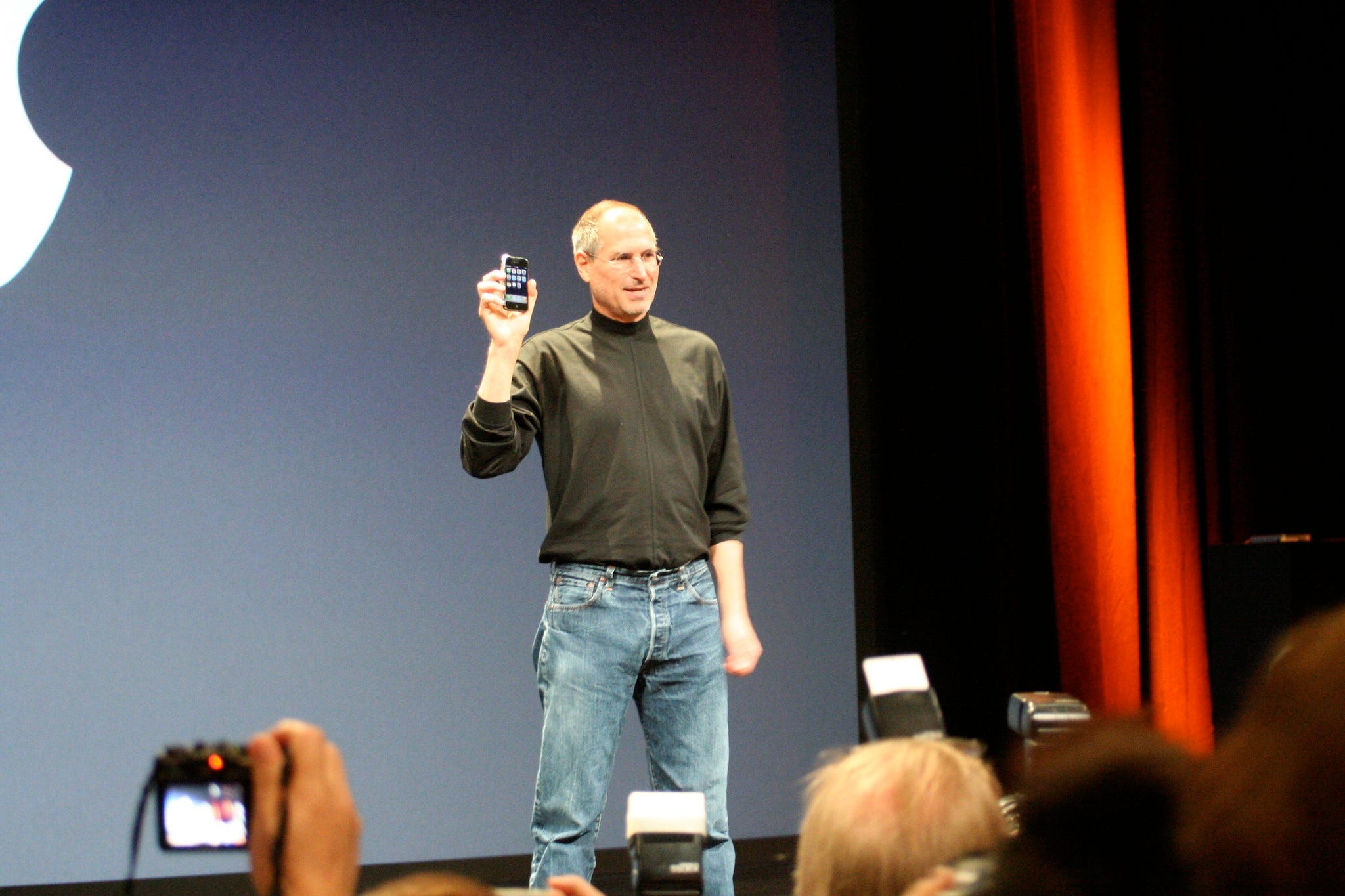如何更好的掌握一個知識點
You’re launching a digital transformation initiative in the middle of the ongoing pandemic. You are pretty excited about this big-ticket investment, which has the potential to solve remote-work challenges that your organization faces.
您正在持續進行的大流行中發起數字化轉型計劃。 您對這項龐大的投資感到非常興奮,這項投資有可能解決組織面臨的遠程工作挑戰。
However, the executive board’s response to your presentation is lukewarm at best. You discover that business teams don’t share your excitement. Your technology team, burdened with multiple priorities, worries that this could lead to more work stress.
但是,執行委員會對您的演講的回應充其量是冷淡的。 您會發現業務團隊不會分享您的興奮。 您的技術團隊擔負著多個優先事項,擔心這可能導致更多的工作壓力。
Don’t we often find ourselves in situations like these?
我們不是經常遇到這樣的情況嗎?
Even the best-laid plans falter due to ineffective communication. Industry reports say that poor internal communication costs organizations over $37 billion annually. Yet, we don’t pay as much attention to fixing our communication woes.
由于溝通不暢,即使是最好的計劃也步履蹣跚。 行業報告稱 ,不良的內部溝通使組織每年損失超過370億美元。 但是,我們對解決溝通難題的關注度不高。

Let’s take a look at the similarities between blockbuster movies, stellar product launches, and successful marketing campaigns. With clear examples, we’ll discuss how technology leaders can transform into storytellers.
讓我們看看大片電影,出色的產品發布和成功的營銷活動之間的相似之處。 通過清晰的示例,我們將討論技術領導者如何轉變為講故事的人。
技術領導者可以從專家講故事中學到什么? (What can tech leaders learn from expert storytellers?)
Picture your all-time favorite movie. The chances are that you watched it a long time ago. But I can bet that it’s fresh in your memory like you saw it a few weeks ago. What makes these movies so memorable?
描繪您歷來最喜歡的電影。 您很可能很久以前就看過它。 但是我敢打賭,就像您幾周前看到的那樣,它在您的記憶中是新鮮的。 是什么讓這些電影如此令人難忘?
Researchers say that there is a deeper connection between great movies, speeches, and business presentations. It’s the emotional arc, also called the “shape of the story.” The emotional arc is the series of emotional ups and downs in the story that hooks the audience, like a rollercoaster ride.
研究人員說,出色的電影,演講和商務演示之間有著更深的聯系。 這是情感的弧線,也稱為“故事的形狀”。 情感弧線是故事中一系列激動人心的風風雨雨,如坐過山車一樣吸引著觀眾。
Master storyteller Kurt Vonnegut analyzed the shapes of popular stories and constructed their emotional arcs. A plot in which a struggling boy reunites with his girl is cliched, but it never fails to work. Remember “Pretty Woman” or “The Notebook”? They play with the time-tested emotional arc of “boy gets girl.”
講故事的主要作家庫爾特·馮內古特(Kurt Vonnegut) 分析了流行故事的形狀并構建了它們的情感弧線。 一個苦苦掙扎的男孩與他的女孩重聚的情節已經過時,但它從未失敗過。 還記得“漂亮女人”還是“筆記本”? 他們玩弄了久經考驗的“男孩變女孩”的情感弧度。
Here’s its shape:
形狀如下:
It looks simple, right? Notice how the emotions vary in the y-axis. As viewers, we bite our nails when things fall into the negative. We cheer for the hero as he rises again to reclaim the girl, lifting the emotions high up again.
看起來很簡單,對吧? 注意情緒如何在y軸上變化。 作為觀眾,當事情變得消極時,我們會咬指甲。 當英雄再次升起召回女孩時,我們為他加油打氣,再次將情緒抬高。
Vonnegut reconstructs the shape of many other interesting stories, including one of the most famous ones of our times — Cinderella! What’s the commonality across all of these? Each one of them uses a variation of the emotional arc to take the audience through ups and downs.
馮內古特(Vonnegut)重塑了許多其他有趣故事的形狀,包括我們這個時代最著名的故事之一-灰姑娘! 所有這些的共同點是什么? 他們中的每一個都使用不同的情感弧度來引導觀眾跌宕起伏。
證明情感弧線重要性的證據 (Evidence to prove the importance of emotional arcs)
MIT’s Lab for Social Machines and McKinsey Consumer Tech team studied thousands of Vimeo videos using advanced analytics to establish the connection.
麻省理工學院的社交機器實驗室和麥肯錫消費者技術團隊使用先進的分析方法研究了數千個Vimeo視頻,以建立連接。
Algorithms that use computer vision and audio analytics scored emotions for every scene, by the second. With the emotional arc for each story sketched out, they used machine learning to club them into eight families.
使用計算機視覺和音頻分析的算法可以在第二秒為每個場景評分。 勾勒出每個故事的情感弧線后,他們使用機器學習將他們分為八個家庭。
The final part of this analysis was to bring in the outcomes — user engagement metrics such as “likes” and “comments.” The researchers found that the emotional arc of a story, generated by the AI algorithm, could predict whether or not audiences would like it.
該分析的最后一部分是引入結果-用戶參與度,例如“喜歡”和“評論”。 研究人員發現,由AI算法生成的故事的情感弧度可以預測觀眾是否喜歡它。
您如何運用情感弧線來改善領導溝通? (How can you apply emotional arcs to improve leadership communication?)
There are three steps to incorporate storytelling into your communications:
可以通過三個步驟將講故事納入您的交流中:
1.超越技術 (1. Go beyond technology)
Think about the audience a technology touches. While talking about technology, we tend to focus more on its features. We do a good job of covering the “What” and “How” but miss out on the “Who” and “Why.”
考慮技術觸及的受眾。 在談論技術時,我們傾向于更多地關注其功能。 我們在涵蓋“什么”和“如何”方面做得很好,但是錯過了“誰”和“為什么”。
When Steve Jobs introduced the iPod, he didn’t talk about its cool engineering or the snazzy design. Instead, he told the audience that they could now carry 1000 songs in their pocket. The focus was squarely on the users and their aspirations.
當史蒂夫·喬布斯(Steve Jobs)推出iPod時,他并沒有談論其炫酷的設計或時髦的設計。 相反,他告訴聽眾他們現在可以在口袋里裝1000首歌了 。 重點完全放在用戶及其期望上。
Steve Jobs was a master storyteller with technology. His biggest successes were due to a deep understanding of who the customer was and why their needs were unfulfilled.
史蒂夫·喬布斯(Steve Jobs)是技術大師。 他最大的成功歸因于對客戶是誰以及為什么他們的需求得不到滿足的深刻理解。
The journey to connect with your audience must start by first thinking about them. What are your user’s needs and preferences? How do they get their job done, and what are their worst nightmares?
與觀眾建立聯系的旅程必須首先考慮他們。 您的用戶的需求和偏好是什么? 他們如何完成工作,最糟糕的噩夢是什么?

2.超越事實 (2. Go beyond facts)
Make the audience experience the possibilities. To paraphrase Maya Angelou, people may forget what you said, but they will remember how you made them feel. Often, our communications are a dry recitation of facts, and that’s why they don’t connect.
使觀眾體驗各種可能性。 用瑪雅·安杰盧(Maya Angelou)來詮釋,人們可能會忘記您說的話,但他們會記住您的感受。 通常,我們的交流是事實的干dry,這就是為什么它們沒有聯系的原因。
Messages delivered as stories are up to 22 times more memorable than just facts, said cognitive psychologist Jerome Bruner. Good stories must paint a vivid picture of the scenes as they unfold. They must use words that convey powerful emotions to move people.
認知心理學家杰羅姆·布魯納(Jerome Bruner)說,作為故事傳遞的信息比事實更令人難忘。 好的故事必須描繪出場景的生動形象。 他們必須使用傳達強烈情感的詞語來感動人們。
For example, when launching your digital transformation, don’t just quantify the pain areas. Get personal by picking a (fictional) user and show us her world. Explain how the challenges lead not only to lost business opportunities but to deep frustrations for the user.
例如,啟動數字化轉型時,不僅要量化痛苦領域。 通過選擇一個(虛構的)用戶來獲得個性,并向我們展示她的世界。 解釋挑戰如何不僅導致失去商機,而且給用戶帶來極大的挫敗感。
Introduce your initiative as the hero that will save the day. Describe the outcomes and show how it will put this user out of their misery.
將您的主動性介紹為會節省一天的英雄。 描述結果并說明它將如何使該用戶擺脫困境。
3.超越傳統敘事 (3. Go beyond traditional narratives)
Introduce variations to build an emotional arc. With a clear picture of the audience and an experiential message to connect with them, now make the story interesting by playing with its emotional arc. Just as a musical note has crescendos and low points, you must introduce variations into your communication.
引入變化以建立情感弧線。 借助清晰的觀眾畫面和與他們建立聯系的體驗性信息,現在通過發揮其情感弧度使故事變得有趣。 正如音符有上升和低點一樣,您必須在交流中引入變化。
Pause for a moment and think about your last business presentation. Did it have any variations? Did you just sequence the good news and bad news? How did you conclude it?
稍等片刻,然后考慮您的上一個業務演示。 有什么變化嗎? 您只是按順序排列好消息還是壞消息? 您是如何得出結論的?
Most of our presentations are informative but sequential, and…boring. The insights are arranged logically but fail to connect emotionally.
我們的大多數演講內容豐富,但順序卻無聊。 這些見解是按邏輯排列的,但無法在情感上建立聯系。
View your communication as a series of sections, like the chapters of a novel. In each section, introduce elements of suspense and tease out the resolution. Repeat this structure iteratively to keep your audience hooked.
將您的交流視為一系列章節,例如小說的章節。 在每個部分中,介紹懸念元素并挑逗解決方案。 反復重復此結構,以吸引觀眾。
Finally, end on a high with a vivid call-to-action to stir your audience towards the next steps.
最后,通過生動的號召性用語結束觀眾的熱烈討論,以引導您的聽眾進入下一步。
情感弧線的概念適用于各種商務溝通。 (The concept of emotional arc applies to all kinds of business communications.)
These three steps will be handy whenever you want to hold an audience’s attention and move them to action.
每當您想引起聽眾的注意并使他們采取行動時,這三個步驟將很方便。
Also, remember that all stories improve through iterations. Take time crafting and critiquing them. Test them out on friends, peers, and sample audiences. Take detailed feedback on what worked and where it needs to get tighter. Then incorporate changes and repeat it all over again.
另外,請記住,所有故事都會通過迭代得到改善。 花一些時間來制作和批判它們。 在朋友,同齡人和樣本受眾上對其進行測試。 取得詳細的反饋,以了解哪些方面可行,哪些方面需要更嚴格。 然后合并更改并再次重復進行。
Good luck storifying and spicing up your business communications.
祝您好運,并充實您的業務溝通。
This article was first published on The Enterprisers Project. Illustrations have been added.
本文最初 發表 在《企業家計劃》上。 插圖已添加。
翻譯自: https://towardsdatascience.com/how-to-become-a-better-storyteller-3-key-points-1a204fb3b18b
如何更好的掌握一個知識點
本文來自互聯網用戶投稿,該文觀點僅代表作者本人,不代表本站立場。本站僅提供信息存儲空間服務,不擁有所有權,不承擔相關法律責任。 如若轉載,請注明出處:http://www.pswp.cn/news/389919.shtml 繁體地址,請注明出處:http://hk.pswp.cn/news/389919.shtml 英文地址,請注明出處:http://en.pswp.cn/news/389919.shtml
如若內容造成侵權/違法違規/事實不符,請聯系多彩編程網進行投訴反饋email:809451989@qq.com,一經查實,立即刪除!

















函數)
